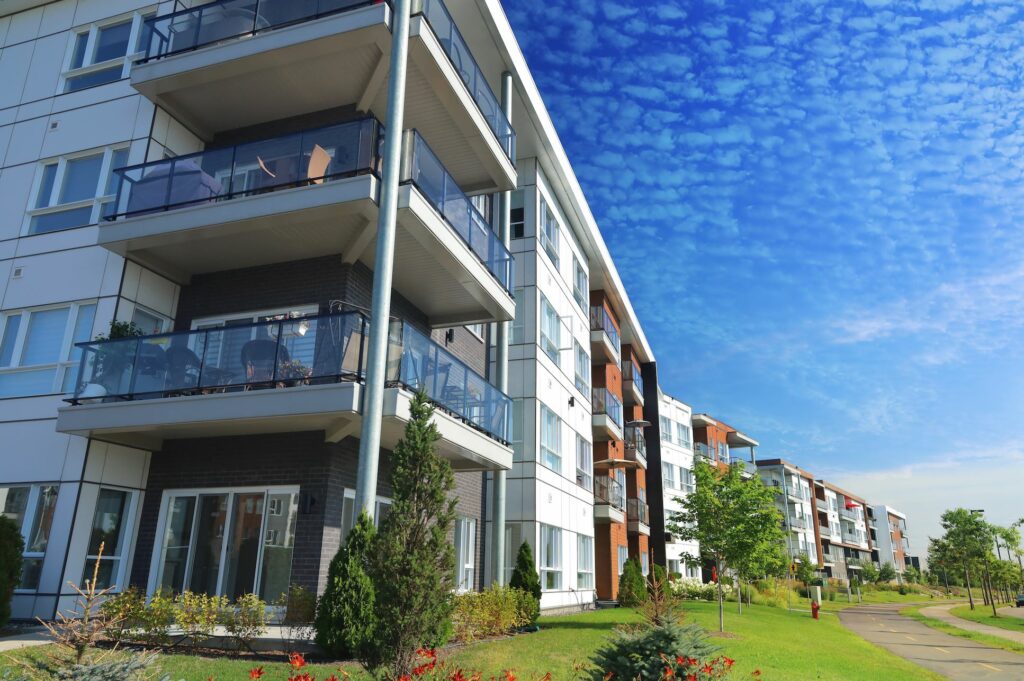Property plans: always set clear goals
The right preparation is essential when building or buying a home.
What determines the value of a property, and what should you consider when it comes to your property plans? These questions deserve a great deal of thought before investing, spending a lot of money, and taking on long-term contractual and financial obligations. A property transaction isn’t something to be taken lightly.
Sort out the financing
The first question is how much money you have available. Do you have sufficient funds available as capital and the ability to cover repayments? If you’re unsure whether you have sufficient financial resources then it’s best not to take things any further. Relying on rough estimates isn’t enough when buying a property. Any credit line needs to be calculated precisely based on the capital and income you have available. The rule of thumb is that your monthly loan repayments shouldn’t exceed 33% of your total monthly income.
Generally speaking, you should also find out what government help is available, as there are a great number of potentially interesting incentives. In addition, it’s very helpful to have a rough idea of your future plans.
Finding the right property
Once you’ve sorted out the financing, you can start your search. Potential buyers often focus mainly on the property itself but the direct vicinity and the development potential of the surrounding area are also very important. The ideal location, good, accessible infrastructure, and a nice neighbourhood all increase the value of a property. So, it’s worth taking a closer look at the surroundings and what the plans for its development are.
Other required information includes monthly and annual consumption data for heating, gas and electricity. If anything needs to be clarified, it’s definitely worth checking and double-checking with the vendor or estate agent.
If you would like to play it safe, you can bring a property expert along with you to the viewing.
If you would like to play it safe, you can bring a property expert along with you to the viewing to help identify problems or hidden defects. The most important thing is to obtain as much information as possible and leave no questions unanswered. It is very helpful to have an extensive checklist with the main questions and answers. That’s how to avoid nasty surprises after close of sale.
In the case of a house, you should also ascertain whether planning permission was obtained for additions and outbuildings (garage, porch, pool, extensions, etc.). Documentation is a must. You should also find out whether works may be carried out on your prospective home or on the site, and if so what kind. It would be a pity to buy a house on a large site and not be able to build the pool you’ve always dreamed of. In the case of a detached house, you can contact the council directly in relation to this.
Before buying, find out from the local council what urban developments (building works and extensions) are planned for the locality and/or municipality. Depending on the nature of the plans, they may enhance or diminish the value of a property. For example, the construction of a motorway or a high-rise in close proximity would have an effect on quality of life and thus on the property value. The same goes for natural risks (risk of flooding, possibility of landslides, etc.) as well as noise pollution or air quality.
Where exactly are the boundaries of your property according to the land registry map? Who owns the wall separating your site from your neighbour’s? Is there an easement (neighbour’s right of way; window rights (not to block, darken or obstruct any window) etc.)? All these issues should be discussed before buying.
Identifying your needs
If you’re buying a house or an apartment, you also need to know what your exact requirements are. With this in mind, it’s worth taking a closer look at the availability of public transport, shops, schools, green spaces and parks nearby.
This includes the exterior (roof, common areas, site, etc.) and the interior (floors, ceilings, walls, windows, plumbing, heat and sound insulation, presence of damp, orientation, etc.). It’s vital to view the basement, attic and garage as well, as they can often be a source of hidden defects.
The type and level of rates may vary from place to place. It’s worth finding out how much the property tax and council charges (charges for sewerage and waste disposal, etc.) are.
Now, moving on to the property itself. Whether house or apartment, a few details are essential for you to be able to verify that the property is in good condition. Ideally, view the property at different times of the day. This is the only way to get a complete picture. Viewing the property at different times makes it easier to check the pros and cons of the location (i.e. sound insulation and volume of traffic) and to explore the neighbourhood.
You can find out a great deal of useful information at a viewing. For example, ask the vendor when the property was built, whether anything has been replaced (such as roof, windows or water heater), about maintenance contracts (septic tank) and other damage. Getting invoices or documentation for the above is most helpful. It is definitely worth asking for solid, verifiable evidence when buying a property.

In the case of apartments, information about the residents’ association is a must!
In the case of apartments, information about the residents’ association is a must! Contact the secretary of the association to view the minutes of its meetings (ideally for the last three years). This will give precise details of the work that has been done but, most of all, also about work that remains to be done.
Of course, when viewing, you should first of all look at the general condition of the property. In Luxembourg, Germany, Belgium and France, the vendor is obliged to provide the buyer with an energy rating certificate, which indicates the building’s energy consumption and greenhouse gas emissions. These documents contain valuable information about the kind and age of building materials used and thus about additional expenditure down the line.
Get your negotiating tactics right
Once you’ve found the right property, you need to negotiate the purchase price. Regardless of the type of property and its location, the scope for negotiation is the difference between the asking price and the real market value, and is therefore limited. A property listed too high will have much lower interest, forcing the seller over time to adjust the price downwards. Therefore, you should always find out how long a property has been on the market.
It’s essential to understand market dynamics and to look at property ads on a regular basis in order to make a realistic offer at the right time. Endless negotiations aren’t a good idea. Sometimes it’s better to make an offer at the asking price rather than enter into negotiations that have little chance of success. In addition, you run the risk of not being taken seriously by the vendor.
Variable or fixed rate? Two types of loan with specific rules
Whether to opt for a fixed or variable-rate mortgage is a key question for many prospective homebuyers. When deciding which of the two to go for, it’s a good idea to consider your personal circumstances, plans for the future and approach to borrowing, not just expected developments in interest rates.
As the name suggests, a fixed-rate mortgage is a loan whose interest rate is independent of fluctuations on the financial markets. This means that the borrower is aware in advance of
-
- the overall cost of the loan, i.e., the total amount of interest payable to the bank plus repayment of the total sum borrowed.
- The level of repayments (generally monthly) remains unchanged during the entire term of the loan.
- The exact term of the repayment period is known when you sign the mortgage agreement.
The biggest advantage with a fixed-rate mortgage is obvious: there are no nasty surprises when interest rates increase, meaning borrowers can relax and enjoy maximum security.
Another benefit is that the borrower is in charge and has the security of knowing that repaying the loan will not pose a threat to other plans for the future. In other words, the transparency provided by this option makes it possible to plan for the future on a risk-free basis. In return for this security, fixed interest rates are normally higher than variable interest rates. That means slightly higher monthly repayments (at least initially) and a slightly smaller credit line for the same amount of borrowing.
Another drawback of fixed-rate loans is that a significant financial penalty will be incurred if you repay some or all of the mortgage early. This penalty covers the bank’s market costs and means you should think very carefully about early repayment.
With a variable-rate mortgage, the interest rate is based on a specific benchmark index. Fluctuations in interest rates on the financial markets will therefore cause your monthly repayments to rise or fall.
There is a major risk that the total amount to be repaid will fluctuate during the term of the mortgage. Given current market conditions, it is quite possible that the total amount repayable will ultimately be higher than for a fixed-rate mortgage.
With a variable-rate mortgage, you are not informed in advance of
-
- the overall cost of the loan, i.e., the total amount of interest payable to the bank plus repayment of the total sum borrowed.
- The level of repayments changes when interest rates rise or fall.
For those building their own home, a variable-rate mortgage also enables the loan amount to be drawn in stages. In other words, the bank releases the required funds as building work progresses. The advantage here is that interest is incurred only on the used portion of the loan and not on the entire loan amount, which is the case with a fixed-rate mortgage.
Can’t decide between a fixed or variable-rate loan? What about a combination of the two? That’s the principle behind an adjustable-rate mortgage. With this type of product, a fixed interest rate applies at the start of the repayment period for a contractually agreed term (usually 3, 5 or 10 years). At the end of this term, you can either switch to a variable rate or choose a new fixed-rate term.
You’ve finally found your dream home. There’s just a little bit more paperwork to complete. The key items are as follows.
|
Change of mind due to the pandemic?
The experience of lockdown has already prompted many people to rethink their living arrangements. Access to a garden or shared outside space is becoming more important. People are increasingly unwilling to accept long commutes to major cities and business centres. Selling points include sustainability strategies to preserve and improve biodiversity, designated green spaces and the exclusive use of renewable energy. These factors are likely to attract new offers that more closely match the aspirations of potential purchasers and/or tenants.


 Mortgage
Mortgage Personal loan
Personal loan Savings
Savings